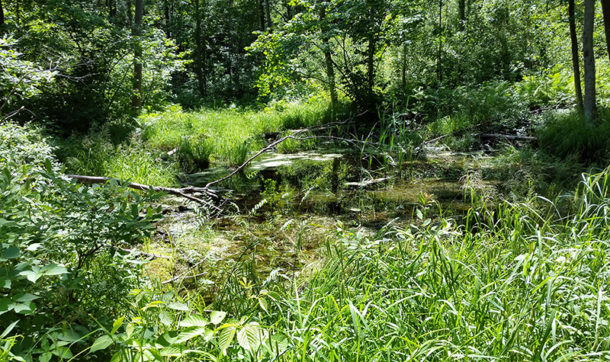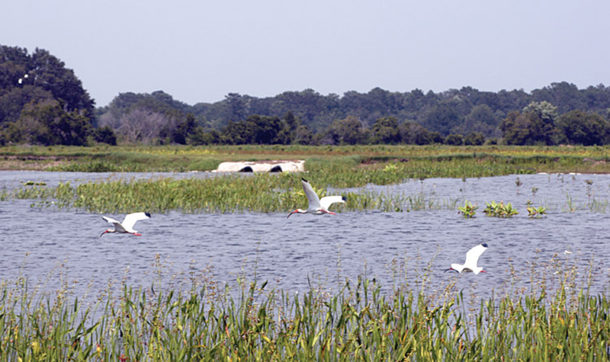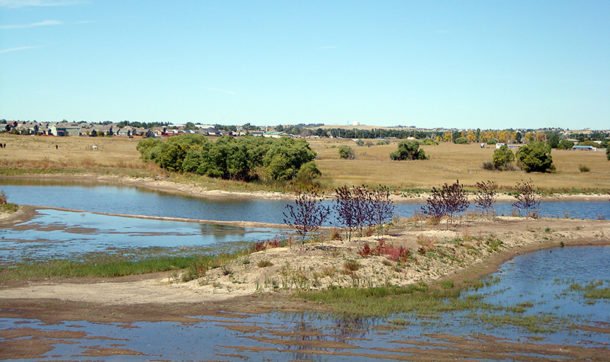Why Are Wetlands Critical? Think Flood Control, Clean Water
 Can you think of a single popular saying that uses the word “bog” or “swamp” in a positive way? Good luck. Not that long ago, bogs and swamps were viewed as areas that were too wet for any productive use, home to buzzing mosquitos and strange plants.
Can you think of a single popular saying that uses the word “bog” or “swamp” in a positive way? Good luck. Not that long ago, bogs and swamps were viewed as areas that were too wet for any productive use, home to buzzing mosquitos and strange plants.
That image is changing. Bogs, swamps, marshes, and fens are now collectively known as “wetlands,” and they’ve proved their value in helping to reduce flood damage and keeping groundwater cleaner.
What Is a Wetland?
The U.S. Army Corps of Engineers (USACE) maintains the Wetlands Delineation Manual, which provides guidelines for determining when areas must be classified as wetlands. In most cases, it’s not that difficult to see what areas might fall into that category:
- Under normal conditions, the land will be inundated or saturated by surface water or groundwater. The area will usually be wet or muddy.
- The land will support plants that are adapted to wet conditions.
- The soil will show evidence of saturation.
Although an individual property owner may not welcome the restrictions the classification imposes, wetlands have value – especially relating to their role in flood control.
- Wetlands act like a natural sponge, soaking up rain and snowmelt and storing the water so it can dissipate slowly, reducing the potential for flood damage downstream.
- Just one acre of wetland – less than the size of a football field – can store up to 1.5 million gallons of water.
- Wetlands allow water from storm events or snow melt to pool, reducing the volume of water and subsequent strain on roads, culverts, and other infrastructure.
- By capturing and slowing the flow of water, wetlands help protect shorelines from erosion.
When water “pauses” in a wetland, pollutants have a chance to sink and be taken up by plants, helping to keep the waters cleaner. And wetlands provide important habitat for plants, birds, and animals – species that often cannot exist elsewhere.
What is Wetland Mitigation?
Wetlands are now considered an asset, and the policy of the U.S. Environmental Protection Agency (EPA) is to avoid or minimize adverse impacts to wetlands when possible. Sometimes there’s no other way to complete a needed project. One example might be reconstructing a roadway to make it safer. If there are wetlands adjacent to the existing road, they are bound to be affected by the work.
 The EPA then calls for “compensatory mitigation” to replace the loss of wetlands in the watershed. Compensatory mitigation could mean several things:
The EPA then calls for “compensatory mitigation” to replace the loss of wetlands in the watershed. Compensatory mitigation could mean several things:
- Restoration – re-establish or rehabilitate a historic wetland that has been compromised.
- Establishment – create a new wetland.
- Enhancement – improve existing wetlands to make them more effective and healthier.
- Preservation – use legal and physical mechanisms to protect or enhance an existing ecosystem.
The USACE or an approved state authority determines the appropriate type and amount of compensatory mitigation required when a project negatively affects a wetland. Project owners can restore, establish, enhance, or preserve wetlands to compensate for the affected site. In doing so, they assume responsibility for the ecological success and long-term protection of the wetlands.
Or, project owners can purchase credits from a mitigation bank. A wetland mitigation bank is a wetland that has been restored, established, enhanced, or preserved and is then set aside to compensate for future loss of wetlands. With the correct permitting, a project owner can purchase “credits” from the mitigation bank to compensate for the loss of or damage to the negatively affected wetland. With this approach, the project owner does not assume responsibility for the long-term health of the wetland.
 It’s not impossible to build in or develop an area that contains wetlands, but the permitting process can get complicated – and with good reason. The bottom lands along the Mississippi River, for example, once stored at least 60 days of floodwater. Now they store less than 14 days because so many acres have been filled or drained. That’s just one example of how those bogs, marshes, fens, and swamps play a vital role in flood control and maintaining water quality – and we’re losing thousands and thousands of acres every year.
It’s not impossible to build in or develop an area that contains wetlands, but the permitting process can get complicated – and with good reason. The bottom lands along the Mississippi River, for example, once stored at least 60 days of floodwater. Now they store less than 14 days because so many acres have been filled or drained. That’s just one example of how those bogs, marshes, fens, and swamps play a vital role in flood control and maintaining water quality – and we’re losing thousands and thousands of acres every year.
Ayres Associates’ experts work with clients to preserve and protect wetlands and also to mitigate unavoidable damage or encroachment. For more information, contact environmental scientist Rob Wayne.
Comments
“compensatory mitigation” use is especially advantageous and has created many beautiful places…

Post a comment: